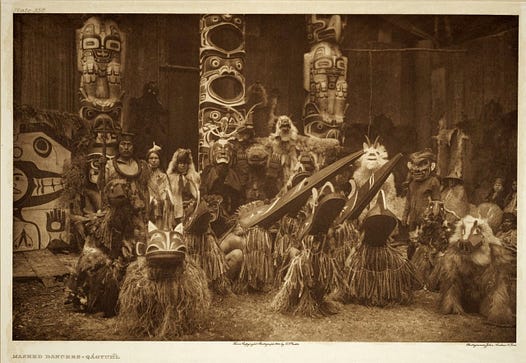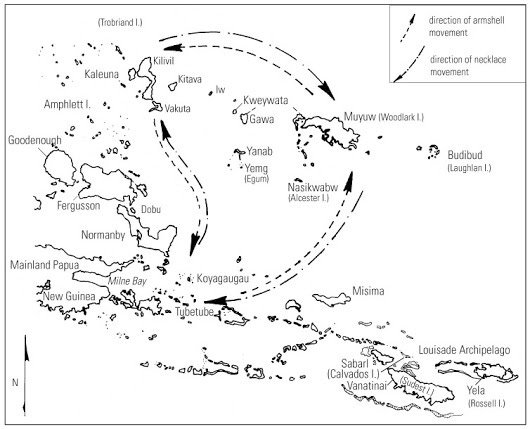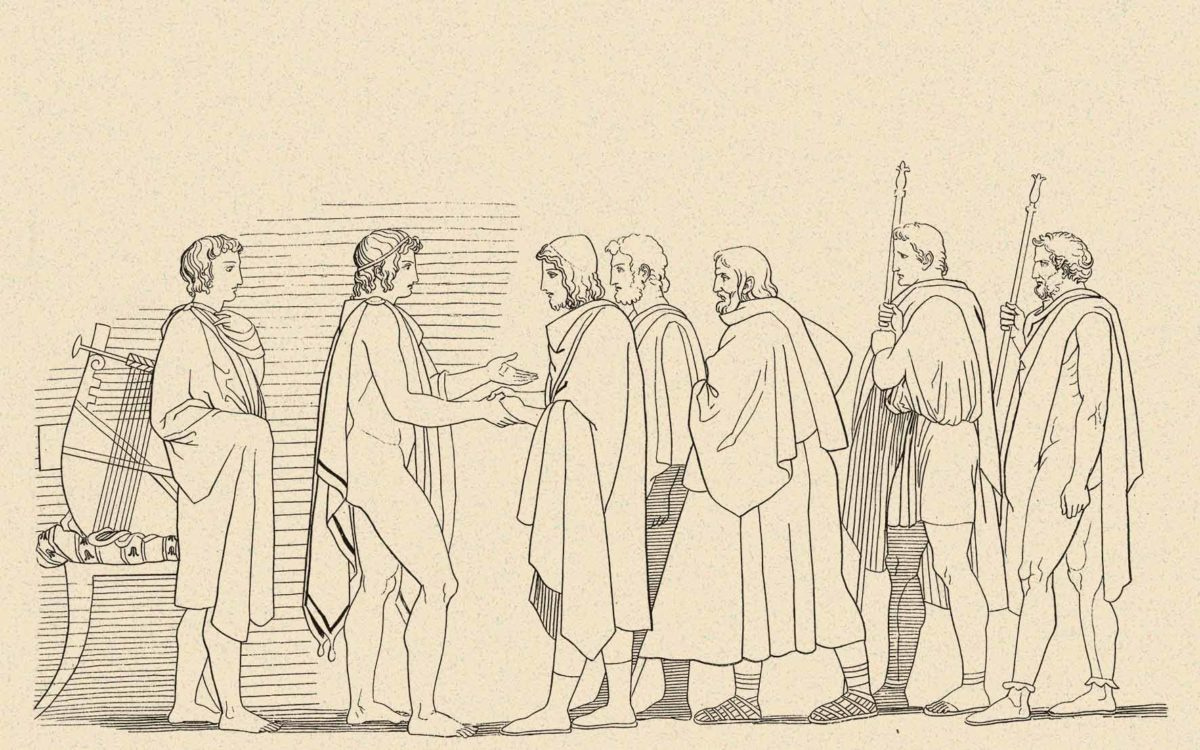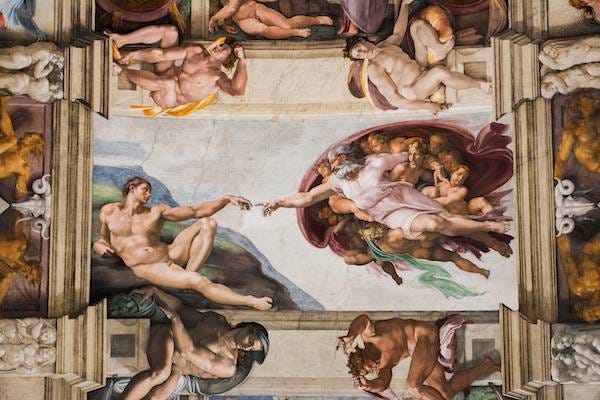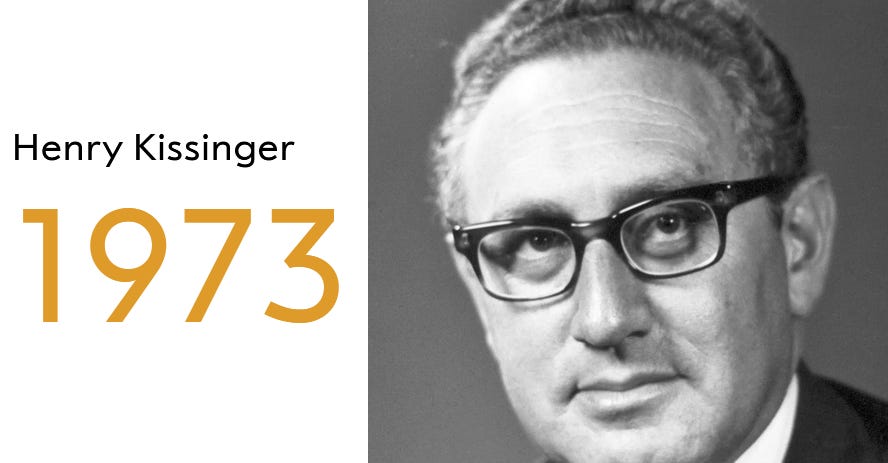Greetings, intrepid explorers of the monetary unknown. I'm excited to announce the launch of my new newsletter, "Money Renaissance," a journey through the fascinating world of money, its history, and the captivating tales that have shaped our civilizations. As a CoinSheet reader, I believe you'll find "Money Renaissance" to be an enlightening and entertaining companion to your interests. CoinSheet isn’t going anywhere and as a valued CoinSheet subscriber, your feedback and suggestions are always welcome. I encourage you to comment on my previous CoinSheet letter (Why Ethereum will outperform Bitcoin in 2023) with topics you'd like me to cover in upcoming CoinSheet letters. Whether it be about DeFi, scaling solutions, price predictions (which I’ll tactfully avoid), NFTs, MEV, or anything else that is even tangentially related to cryptocurrencies and magic internet money. The most liked comment will be the subject of my next CoinSheet letter (even if it only has 1 like). Thank you for your continued support, and I can't wait to share this new adventure with you Without further ado, let’s begin. Today, we're blasting off into the past, back to a time when the concept of money was as foreign as a Martian landscape. We're plunging into the depths of primitive trade, where a mind-bending revelation awaits. Are you ready to uncover the enigmatic roots of human exchange? The Primordial Origins of TradeIn the days of yore, when humans still roamed the Earth in loincloths and grunted to communicate, trade was more akin to a favor-for-favor system. This pre-barter era was founded on trust and reciprocity, where one good turn deserved another. Imagine, if you will, being a caveman with a knack for crafting stone tools. Your neighbor, a skilled hunter, has caught more yummy mammoth meat than they can eat. In exchange for one of your nifty stone tools, they offer you a chunk of that delicious mammoth steak. It's a win-win situation, and you both walk away with something you need. The Curious Case of the Tribal Gift EconomyAs caveman society evolved into more complex tribes, a fascinating phenomenon known as the "gift economy" emerged. In this system, generosity was key. Tribes would exchange goods and services as gifts, expecting that the favor would be returned in the future. The goal was to build relationships and foster goodwill, rather than make immediate, transactional exchanges. Picture two tribes living side by side. One tribe is skilled at fishing, while the other excels in pottery-making. The fishing tribe, feeling neighborly, decides to gift some of their fresh catch to the pottery tribe. In return, the pottery tribe, not to be outdone in the generosity department, sends back some beautiful clay pots. No immediate exchange takes place, but the bond between the tribes is strengthened, and they know they can rely on each other when the need arises. The Old Is The NewTake, for example, the Kwakiutl tribes of the Pacific Northwest. Known for their extravagant potlatch ceremonies (opulent feasts at which possessions are given away or destroyed to display wealth or enhance prestige). These tribes would hold lavish feasts, where they would gift vast quantities of food, blankets, and other valuables to neighboring tribes. The recipients would then be obligated to reciprocate at a later date, often trying to outdo the original gift-givers in generosity. The potlatch served as a way to establish status, alliances, and inter-tribal connections. As we delve deeper into the rabbit hole of human history, it's fascinating to discover that even in our technologically advanced era, we're not so far removed from our tribal roots. Take the traditional potlatch, with its extravagant displays of wealth and destruction. Sounds eerily familiar, doesn't it? In today's society, we can find striking parallels between the potlatch ceremonies of the Pacific Northwest and the hedonistic, "models and bottles" club culture that consumes the lives of the rich and the reckless. Much like the ancient tribes, these modern-day "tribes" of socialites, influencers, and high rollers engage in a sort of "urban potlatch" that's equal parts excess, envy, and one-upmanship. The Instagram-driven, powder-fueled, champagne-drenched nights at exclusive clubs are a far cry from the feasts of the Kwakiutl tribes, yet they share the same primal urge to establish dominance and social status through ostentatious displays of wealth. The more you spend on bottle service and the more followers you gain from flaunting your lavish lifestyle, the higher your status climbs in this digital-age hierarchy. It's as if our ancient ancestors have swapped their blankets and trinkets for designer clothes and luxury sports cars. The uncanny resemblance between the tribal potlatch and today's club culture serves as a stark reminder that human nature hasn't changed all that much. We may have traded seashells and furs for digital currencies and designer goods, but our relentless pursuit of status remains as deeply ingrained as ever. So, the next time you find yourself lost in the neon haze of a VIP section, sipping overpriced champagne and rubbing elbows with the so-called elite, take a moment to reflect on the bizarre, time-bending connection between your modern revelry and the ancient rituals of our tribal ancestors. Gift Economies From Various CulturesLet's take a closer look at some intriguing examples of the gift economy from various cultures. While these examples illustrate the unique ways ancient societies exchanged goods and services, they also reveal the cracks that eventually led to the adoption of the barter system. The Potlatch ceremonies of the Pacific Northwest: As mentioned earlier, these extravagant feasts often involved the destruction of valuable items to demonstrate wealth and power. This ritualized destruction was a wildly unsustainable practice and a glaring inefficiency of the gift economy. The Kula Ring of the Trobriand Islands: In this closed trading system, participants exchanged shell necklaces (veigun) and armbands (mwal) in a clockwise and counterclockwise direction, respectively, around the islands. The Kula exchange was a way to establish social status and alliances. However, the complex gift-giving rituals and the need to maintain relationships with numerous trade partners demanded significant time and effort, making it inefficient compared to a barter system. Mauss's study of gift-giving among Native American groups: Marcel Mauss, a French sociologist, observed that among Native American tribes, gift-giving was not an altruistic act but rather an obligatory one. Failure to reciprocate a gift could lead to feuds or even violence. This coercive element undermined the trust-based nature of the gift economy and contributed to the eventual shift towards barter. Ancient Greek xenia: In ancient Greece, the practice of xenia was a system of guest-friendship where hosts provided for their guests' needs, and guests offered gifts in return. Homeric poetry has a recurring theme of hospitality. The tale of the Iliad recalls the Trojan War, the Greeks’ reaction to a blatant violation of xenia. Paris (f-boy) broke the sacred guest code when he "swiped right" on his host's wife and snuck her out of Sparta. While this practice fostered strong bonds and social cohesion, it was limited by the need for pre-existing relationships between hosts and guests. As societies grew and trade with strangers increased, the gift economy's reliance on relationships made it impractical. The Moka exchange of Papua New Guinea: In the highlands of Papua New Guinea, tribes engaged in the Moka exchange, a ceremonial gift-giving system involving pigs, pearl shells, and other valuables. Here, generosity was a power move, and the more you gave, the more influence you wielded. The Vikings and their Gift-Giving Culture: In the Norse societies of yore, gifts served as a token of friendship, loyalty, and even protection. A leader's ability to shower their followers with gifts solidified bonds and kept the peace. Bushmen of the Kalahari Desert: The San people, or Bushmen, of the Kalahari Desert practiced a gift economy based on the sharing of food and resources. In this world, sharing was not just caring, but an essential survival strategy. Ancient Roman patronage: In ancient Rome, wealthy patrons supported their clients with financial aid, protection, and connections. In return, clients provided political support, loyalty, and various services. It was a "you scratch my back, I'll scratch yours" situation with a side of togas and marble columns. The Ainu people of Japan: The Ainu people of northern Japan engaged in a gift economy that involved the exchange of goods, such as food, clothing, and even precious family heirlooms. This system of reciprocity established social bonds and helped maintain a sense of community. Prehistoric hunter-gatherer societies: The earliest example of gift economies can be traced back to the prehistoric hunter-gatherer societies that existed more than 10,000 years ago. In these societies, people lived in small, close-knit groups where resources were shared among the members. The sharing and giving of food, tools, and other resources were essential for their survival and social cohesion. While specific instances of these early gift economies are difficult to pinpoint (because these early tribes of cave-dwelling trendsetters didn't have written records), we can infer their existence from archaeological findings and the study of modern-day hunter-gatherer communities that still practice gift economies. These early societies were the OG influencers, setting the stage for the countless gift economies that would follow throughout human history. The Modern Day Gift EconomiesYou might be surprised to discover that our seemingly advanced civilization isn't so different from our ancestral counterparts when it comes to the timeless art of generosity. Lets look at a few examples of how gift-giving continues to shape our contemporary world, from pop-culture to geopolitics and international relations. Foreign Aid: Countries shower one another with financial aid like college students dropping cash on overpriced lattes. Altruism aside, it's mostly about buttering up allies and winning friends in a global high-stakes game. Disaster Relief DJ: When disaster strikes, nations band together like a superstar DJ lineup at a music festival, offering humanitarian aid and supplies to show their support and compassion. Sometimes it’s like Live Aid circa 1985. Sometimes it’s like David Guetta circa 2020.  Athletic Showdowns: International sporting events, like the Olympics and World Cup, are lavish displays of national pride and generosity, where hosting countries roll out the red carpet for athletes and fans alike. Prestigious Prize Galas: Awards like the Nobel Peace Prize are like the Oscars of global recognition, shining a spotlight on those who have made extraordinary contributions to humanity. Sometimes they're meritocratic, sometimes they’re not. The United Nations Mixers: UN gatherings are like upscale cocktail parties, where nations swap ideas and resources over fancy finger foods, while debating the fate of the world. Cosmic Collaborations: Space exploration and cooperation, like the International Space Station, showcase humanity's shared quest for knowledge, as countries pool resources and expertise to reach for the stars. Big Tech Philanthropy: Tech giants like Google and Facebook wield their immense wealth and influence to fund education, healthcare, and other initiatives around the world, proving that even Silicon Valley has a heart. Essence of Money and TradeAs we wrap up our exploration of the Pre-Barter Age, we've gained invaluable insights into the essence of money and trade. If not, no worries, I’ve went ahead and summarized the jist of them below.
Understanding the Pre-Barter Age is crucial for grasping the fundamental aspects of money and its evolution. By examining these ancient gift-giving societies, we can appreciate the origins of trade, the initial motivations for exchanging goods and services, and how communities functioned before standardized currency systems. It reveals the inherent human need for cooperation, reciprocity, and trust in trade, which paved the way for modern monetary systems. The EndAs we bid farewell to the Pre-Barter Age, let's remember the lessons it has taught us and appreciate the complex history that brought us to our current understanding of money and trade. While these early systems of trade were charming in their simplicity, they relied heavily on trust and goodwill—two qualities that don't always abound in human society. So, stay tuned as we continue to unravel the tales of money, trade, and the evolution of civilization. Until next time, Space Cowboy. Thanks for being a reader of Money Renaissance. If you enjoyed reading this, consider sharing with a friend. |



